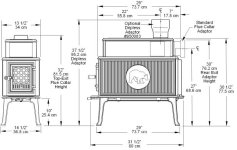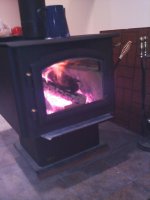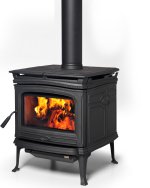Thanks for the info so far. I was, at first planning on using single wall pipe in the house but have read that double wall is close to as good w/ letting the heat into the surrounding area so for the extra safety and closer clearances I think the double wall is the way to go.
And yea, I have looked into the prices on the chimney and WOW its expensive but no big surprise as I have had a general knowledge of the prices so it is an expected expense. I only have about 9' from my ceiling to the top of the chimney so that is about $350-$400 in just pipe but I have prices of about $900-$1200 factored in for the pipe but as far as the flue damper I didn't know if I should go ahead and spend the money on it or not.
The stove will be a bit large for our house and I didn't know if the damper would help keep us from burning ourselves out.

Currently I a am prepping the house to install the stove which includes moving ceiling joists for clearance since where we want it the rafter and the joist are not in line. Also. the floor is wood below w/ footing on the back and one side so in order to hold a bit more weight and hold more heat I am going to cut the floor open dig a footing for the stove and dowel it into the original footing. Then I will separate the footing and the limestone rock by laying a layer of sand to insulate the rock and stove from radiating the heat into the ground. The rock slabs I am using for the back and sides of the stove are 6 1/2" thick and will be 5' high and w/ aprox. 80 square feet of rock around the stove. The reason for this is I grew up in a house where my dad and I built something similar out of natural limestone and once the rock and surrounding concrete got warm it stayed that way for a day w/ no heat from the stove. The only difference is his home was it is earth contact so it also warmed the surrounding concrete floors where as we have crawlspace but I believe the cu ft of rock will have a lasting effect on the heat.


